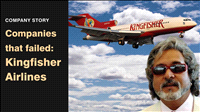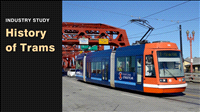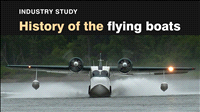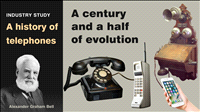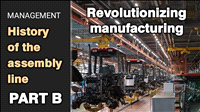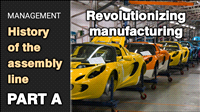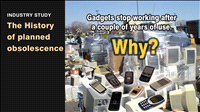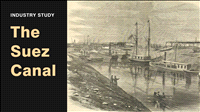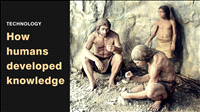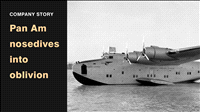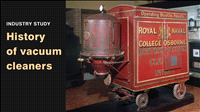Electric aircraft | History of Electric aircraft | Technology | Business History
By Kiron Kasbekar | 25 Feb 2023
I am Kiron Kasbekar, and the video I’ve created for you today is a brief discussion of a fascinating technology that is new – but is also kind of not new. I am referring to electric aircraft.
I bet you’ve not yet flown in an electric aircraft. So – it will be new when it happens. Right? Same goes with me. Never taken an electric aircraft flight.
The video clip you see on your screen is a NASA concept model. Very interesting, but not yet in production. It will take a few years for this type of plane to fly. And that is the case with many other models that are on the drawing board or have been exhibited as prototypes.
Yet, as I said, electric aircraft are not new.
Electric aircraft were conceived way back in the late 19th century. More than a hundred years ago. And, then, after being forgotten for many decades, the idea was revived in the 1970s. But, once again, it didn’t survive. Until now.
But before I start on all that, one request.
I hope you’ve seen our earlier videos and liked them. If so, please subscribe to this channel, if you have not done so already. Do also click on the ‘like’ button below. And do share this link with your friends.
I also hope you will watch the entire length of this video. Now let me get back to it.
Now, in this video, we will be exploring what electric aircraft are, their brief history, their environmental impact, and some leading companies in the industry. I will touch upon some companies that are in this field, and leave a more detailed discussion of electric aircraft companies for another video.
Let’s start with what electric aircraft are. Well, they are aircraft that use electric power to fly instead of traditional fossil fuels.
But, no, they are not plugged into an electric socket somewhere on the ground. Just joking!
You cannot think of an electric car drawing power from a long wire connected to a plug-point at its starting point. Can you? No. But, remember, until a bit more than a half century ago, we had trams and trolley buses that ran on electricity, and they were connected to electric cables overhead.
Kolkata is perhaps the only city in Asia that has maintained its tramway network till today. And trams are making a comeback in some countries where they had been scrapped earlier. In America, the San Francisco cable car system has gone through many ups and downs, including being destroyed by an earthquake in 1906 – but continues to run. Canberra, the Australian capital, introduced a tram system a few years ago. The idea of the tram has been spreading across the world.
And we have had a long run of electric trains that are getting increasingly fast and sophisticated. They have replaced the steam engine-driven trains that existed earlier.
Clearly, since vehicles in motion, either airplanes or cars, cannot be tethered to a source of power, they have to carry the source of power on-board. That source is the batteries that have stored the energy that can turn a motor. The motor turns the wheels in a car, and propellers in an aircraft.
Electric aircraft are powered by batteries, fuel cells, or solar cells, which supply electricity to electric motors that turn the rotors that fly the aircraft.
The idea of planes powered by electric batteries sounds like a really novel idea, doesn’t it? But, as I said earlier, the idea is not new at all.
The first time electric batteries were used to fly an aircraft was when they were loaded on an airship, also known as a dirigible. A dirigible is a lighter-than-air craft that is powered and can be steered, unlike a lighter-than-air balloon, which is free floating and cannot be steered. Balloons, where they are used today, mainly as an advertising medium, are normally tethered to the ground by long cables. These are also called blimps.
Many people had tried to make balloons that could be used to travel from place to place.
More than four centuries ago, in 1709, Bartolomeu de Gusmão, a Brazilian-Portuguese Jesuit priest, made a hot air balloon, which he called the Passarola. The first balloon he made caught fire. But in another demonstration he made, a balloon rose 95 meters in the air as an excited Portuguese court watched.
The balloon was made of thick brown paper. Yes. Brown paper.
Remember, airplane bodies today are made primarily of aluminium. But the discovery of aluminium was made public as late as 1825, by Danish physicist Hans Christian Orsted. French chemist Henri Étienne Sainte-Claire Deville initiated the first industrial production of the metal in 1856.
And the mass use of aluminium became possible only after the implementation of the Hall–Héroult process, a technology independently developed in 1886 by French engineer Paul Héroult and American engineer Charles Martin Hall.
So we shouldn’t be surprised that way back in 1709 Bartolomeu de Gusmão used paper to craft his balloon for aviation. Use of any other material, such as steel, for example, would have made the contraption far too heavy to rise in the air. The balloon was filled with hot air produced by a fire in a clay bowl in a boat-like structure hanging below the balloon.
Other versions of the balloon followed, several of them in France, until in the 19th century some practical methods of propulsion were added to balloons.
In 1851, William Bland sent designs for his ‘Atomic Airship’ to the Great Exhibition held in London in 1851, where a model was displayed. Bland, an Australian who was born in England and practiced medicine and surgery, had been banished to Australia after he shot and killed Robert Case, a ship's purser, in Bombay Harbor, in what was then British India.
Bland created an elongated balloon attached to a steam engine driving twin propellers suspended underneath. A model was displayed at the exhibition. But the aircraft was never actually built.
Several other versions of such airships were designed, and some were actually built and used, in France, in England, in America, and elsewhere.
The use of electricity to propel aircraft was first tried during the time when airships were being developed in the latter part of the nineteenth century.
Gaston Tissandier, a French chemist, meteorologist, aviator, and editor, flew the first electrically powered airship on 8 October 1883. In 1884, Charles Renard and Arthur Krebs flew La France, a French Army non-rigid airship, with a more powerful motor.
While the airship had considerable lifting capacity, the weight of the accumulators in which the electricity was stored was too great for the airship to achieve any meaningful speed or range.
Then, on 6 May 1937, there was the terrible accident of the Hindenburg, a German airship, in which 36 people were killed. That brought all airship plans to an end.
Almost a century after that fateful day, fully electric airships are expected to fly again – sometime in the 2030s.
The increase in demand for these new technologies has coincided with forecasts of a steady depletion of the world’s petroleum resources in the next few decades. The world is running out of petroleum. And means of transport that have depended on petroleum-based fuels must find alternative sources of energy.
As I have said earlier, the first electric aeroplane was developed in the early 1970s, but it is only in recent years that electric aircraft have gained popularity due to the increasing demand for more sustainable forms of transportation.
The drive to create viable electric aircraft has received a boost with recent advances in battery technology. The battery is a key component of electric aircraft, and today’s lithium-ion batteries, commonly used in electric aircraft, have high energy density and low weight. That makes them ideal for use in aircraft.
Another important component of electric aircraft is the electric motor. These motors are now lighter, and more efficient than the traditional combustion engines used on aircraft. With fewer moving parts, they are also easier to maintain.
Equally important in today’s highly polluted world – the environmental impact of electric aircraft is significantly lower than that of traditional aircraft. These aircraft produce zero emissions during flight, which can reduce the carbon footprint of air travel.
Also, they are quieter than traditional aircraft. So electric aircraft can also reduce noise pollution around airports.
Work is in progress to develop solar cells and fuel cells as alternative power sources for electric aircraft.
You must have, of course, seen or heard of solar cells being used to power water heaters and home heating or air-conditioning systems. Maybe you even have such a system installed in your home. Now work is in progress to integrate solar cells in aircraft to convert sunlight into electricity, which can be used to power the aircraft.
Similarly, fuel cells can convert hydrogen into electricity, which can then power the aircraft. Research is also being done to harness microwave energy to power electric aircraft.
There are over a hundred companies working in the area of electric aircraft, and we can hope to see electric aircraft becoming commonplace in the next two decades.
Several companies are leading the way in electric aircraft development. One of these companies is Airbus, which is currently developing a hybrid electric aircraft called the E-Fan X. Another company is Eviation, which is developing an all-electric aircraft called Alice. Other notable companies in the industry include Zunum Aero, Wright Electric, and Joby Aviation.
The list is really much longer, and over the next few years we’ll get to see which technologies come to the fore.
In conclusion let me say this: electric aircraft show great promise, and they can revolutionize air travel. They will be more sustainable as well as efficient compared with traditional aircraft. And advances in battery and motor technology will make them more viable for commercial use.
The challenges include the fact that they have limited range. So a charging infrastructure will have to be built so aircraft moving longer distances can land and re-charge wherever required.
Let us hope these issues will be dealt with soon. For, given the problems with hydrocarbon fuels, we are in a race against time. Let’s hope we can win that race.
One last thing. The development of electric aircraft is yet another example of how technologies evolve. The latest supersonic planes or spaceships did not materialize out of some inventor’s mind.
The idea of flying vehicles evolved over the centuries, and the first attempts seem to have almost no resemblance at all to the latest thing. But you can see the path of technological evolution if you study the history of a product stage by stage over the years, decades and centuries.
Well, that brings me to the end of this video. Do write your comments in the space below about what you think about this video.
Do also watch this place for more videos. And tell your friends and colleagues too!
And, if you have not already subscribed to the Business History channel, please do so; for then you will be alerted every time we upload a new video here.
Do also visit our website, bh.domain-b.com to get a lot more content on business history, including lists of books, and book reviews, people, some fun tidbits, and a business history quiz.
From there you will also get access to a wide range of business news and content on Informachine, the web-based business intelligence and knowledge management system that finds, tracks, and downloads relevant news from your selected sources, saving you hours of grind and toil.
It’s free of cost!
The links are given below in the description to the video.
Thank you for watching! And I hope to see you with our next video. Until then, goodbye!






